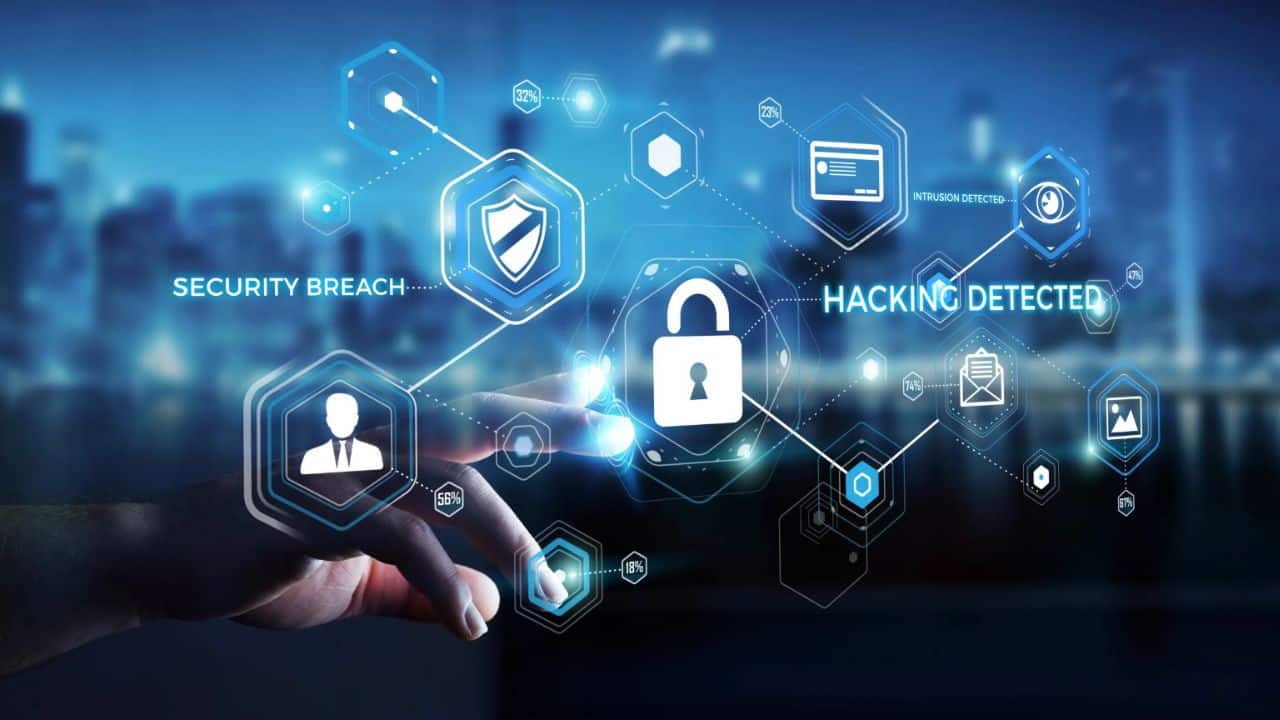Cyberattacks on government systems are no longer just techy headlines—they’re real-world wake-up calls. Imagine a hacker flipping the switch on a nation’s power grid or swiping sensitive data from millions of citizens. It’s not sci-fi; it’s happening. Governments, with their treasure troves of personal data and critical infrastructure, are prime targets. In this article, we’ll dive into five of the most significant government cyberattacks in recent history, unpack what went wrong, and explore the lessons we must learn to stay one step ahead of the bad guys. Buckle up—it’s a wild ride through the digital battlefield.
Why Government Cyberattacks Matter
Governments hold the keys to national security, citizen data, and critical infrastructure. A breach here isn’t just a stolen password—it can disrupt economies, endanger lives, and shake public trust. From espionage to ransomware, these attacks expose vulnerabilities that affect us all. Let’s explore five major incidents that rocked governments and what they teach us about staying secure.
The Stakes Are High
When a government gets hacked, the fallout can be catastrophic. Think election meddling, stolen military secrets, or crippled healthcare systems. These incidents don’t just cost money—they erode confidence in institutions. Understanding these attacks helps us demand better protections and build resilience.
1. SolarWinds Supply Chain Attack (2020)
In 2020, the SolarWinds attack sent shockwaves through the U.S. government and beyond. Hackers, believed to be Russian state-sponsored actors, slipped malicious code into SolarWinds’ Orion software updates, which were then distributed to over 18,000 organizations, including U.S. federal agencies. This wasn’t a smash-and-grab; it was a stealthy, months-long espionage campaign.
What Happened?
The attackers exploited a trusted software update to infiltrate networks, accessing sensitive data from agencies like the Department of Homeland Security and the Treasury. The breach went undetected for months, highlighting the danger of supply chain vulnerabilities. It cost billions in damages and exposed critical gaps in cybersecurity.
Lessons Learned
- Vet third-party vendors rigorously: Governments must scrutinize software supply chains. Regular audits and security certifications for vendors are non-negotiable.
- Continuous monitoring is key: Real-time threat detection could’ve caught this sooner. Invest in tools like intrusion detection systems (IDS).
- Patch management matters: Outdated systems are low-hanging fruit for hackers. Automate and prioritize software updates.
2. WannaCry Ransomware Attack (2017)
Picture hospitals turning away patients because their systems are locked. That was the reality in 2017 when WannaCry ransomware, attributed to North Korean hackers, hit over 150 countries, including the UK’s National Health Service (NHS). This attack exploited a Windows vulnerability, encrypting files and demanding Bitcoin ransoms.
The NHS Fallout
The NHS was hit hard, with 81 health trusts affected, canceling thousands of appointments and costing £92 million. Emergency services were diverted, and patient care was disrupted. It was a stark reminder that cyberattacks can have life-or-death consequences.
Lessons Learned
- Patch vulnerabilities promptly: The exploited Windows flaw had a patch available months before the attack. Timely updates could’ve prevented this.
- Backup critical data: Regular, secure backups can minimize ransomware damage. Test restores to ensure they work.
- Train employees on phishing: WannaCry spread via phishing emails. Staff training reduces the risk of clicking malicious links.
3. NotPetya Malware Attack (2017)
NotPetya, another 2017 nightmare, wasn’t your typical ransomware. Disguised as a money grab, this destructive malware—linked to Russian hackers—targeted Ukraine’s government and spread globally, causing over $10 billion in damages. It hit everything from Ukraine’s financial sector to global companies like Maersk.
A Digital Wrecking Ball
Unlike traditional ransomware, NotPetya’s goal was destruction, not profit. It wiped systems, paralyzed Ukraine’s infrastructure, and disrupted global supply chains. The White House called it the “most destructive cyberattack in history.” It showed how cyberattacks can be weapons of war.
Lessons Learned
- Segment networks: Isolate critical systems to limit malware spread. Ukraine’s interconnected systems amplified the damage.
- Prepare for nation-state attacks: Governments must anticipate state-sponsored threats with advanced defenses like zero-trust architecture.
- Global cooperation is essential: Cross-border intelligence sharing can help detect and mitigate such attacks early.
4. Equifax Data Breach (2017)
While not a direct government attack, the 2017 Equifax breach had massive implications for government systems, exposing sensitive data of 147.9 million Americans, including Social Security numbers. Hackers, allegedly tied to China’s military, exploited a known Apache Struts vulnerability.
A Cascade of Consequences
The stolen data fueled identity theft and fraud, impacting government services like tax filings and Social Security administration. Equifax faced lawsuits and fines, but the real cost was public trust. This breach showed how private-sector failures can ripple into government operations.
Lessons Learned
- Secure sensitive data: Encrypt PII and limit access to only what’s necessary. Equifax’s lax security was a disaster waiting to happen.
- Act on known vulnerabilities: The Apache Struts flaw had a patch available. Prioritize fixing known issues.
- Public-private partnerships: Governments and companies must collaborate to protect shared data ecosystems.
5. Australian Government Hack (2024)
In January 2024, Russian hackers breached 65 Australian government departments via a law firm’s systems, stealing 2.5 million documents. This was Australia’s largest government cyberattack, exposing sensitive files and shaking public confidence.
A Legal Loophole
The hackers exploited a third-party law firm working with the government, highlighting the risks of external partners. The breach led to sanctions against the hacker, Aleksandr Ermakov, by Australia, the U.S., and the UK—a rare move signaling global resolve.
Lessons Learned
- Secure third-party access: Vet and monitor external partners’ security practices. Weak links can sink the whole chain.
- Swift response saves lives: Australia’s quick sanctions set a precedent. Rapid attribution and action deter future attacks.
- Transparency builds trust: Clear communication about breaches helps maintain public confidence.
Comparing the Attacks: A Snapshot
| Attack | Year | Target | Impact | Key Vulnerability |
|---|---|---|---|---|
| SolarWinds | 2020 | U.S. Government | Espionage, billions in damages | Supply chain compromise |
| WannaCry | 2017 | UK NHS, global systems | £92M NHS cost, disrupted healthcare | Unpatched Windows vulnerability |
| NotPetya | 2017 | Ukraine, global companies | $10B+ damages, infrastructure chaos | Malware spread via networks |
| Equifax | 2017 | U.S. citizens, government data | 147.9M records stolen, identity theft | Unpatched Apache Struts flaw |
| Australian Hack | 2024 | Australian government | 2.5M documents stolen | Third-party law firm breach |
Pros and Cons of Current Cybersecurity Approaches
Pros:
- Increased investment in cybersecurity tools and training.
- Global cooperation improving through initiatives like CISA’s advisories.
- Stronger regulations like GDPR and NIS2 pushing compliance.
Cons:
- Legacy systems in governments remain vulnerable.
- Slow response to known vulnerabilities (e.g., Equifax, WannaCry).
- Overreliance on third-party vendors without proper oversight.
People Also Ask (PAA)
What is a government cyberattack?
A government cyberattack targets state systems, data, or infrastructure, often for espionage, disruption, or financial gain. These attacks can compromise national security or public services. They range from ransomware to sophisticated state-sponsored hacks.
How can governments prevent cyberattacks?
Governments can prevent attacks by adopting zero-trust architecture, regularly patching systems, training employees, and vetting third-party vendors. Tools like firewalls and IDS, along with global intelligence sharing, are critical.
Where to get cybersecurity tools for government agencies?
Agencies can source tools from trusted providers like CrowdStrike, Palo Alto Networks, or Cisco. CISA’s website (www.cisa.gov) offers free resources and advisories. Partner with certified vendors for tailored solutions.
What are the best tools for cybersecurity protection?
Top tools include:
- CrowdStrike Falcon: Real-time threat detection.
- Palo Alto Firewalls: Network security.
- Splunk: Log analysis for monitoring.
- Microsoft Defender: Endpoint protection.
Check CISA’s recommendations for government-approved solutions.
Lessons for the Future: Building a Resilient Defense
These cyberattacks reveal a pattern: vulnerabilities in third-party systems, unpatched software, and human error are hackers’ favorite entry points. Governments must act fast to close these gaps. Here’s how:
- Adopt zero-trust architecture: Assume no one is trustworthy until verified. This limits lateral movement by hackers.
- Invest in AI-driven monitoring: Tools like Splunk or CrowdStrike use AI to spot anomalies in real time.
- Train the human firewall: Employees are often the weakest link. Regular phishing drills and security awareness programs are a must.
- Strengthen public-private ties: Governments and companies share data risks. Collaborate on standards and threat intelligence.
- Plan for the worst: Incident response plans and regular backups can minimize damage when (not if) an attack hits.
A Personal Perspective: Why This Hits Home
A few years ago, a friend working in a government agency shared a chilling story. Their department’s systems went down after a phishing email slipped through. For days, they scrambled to restore access while worrying about leaked citizen data. It wasn’t just a tech issue—it felt personal, knowing lives depended on those systems. That’s why these lessons aren’t just for IT teams; they’re for all of us who rely on secure government services.
FAQ: Your Questions Answered
What makes government systems a target for cyberattacks?
Government systems hold sensitive data like PII, military secrets, and infrastructure controls, making them prime targets for espionage, sabotage, or ransom. Their complexity and legacy systems also create vulnerabilities.
How do supply chain attacks like SolarWinds happen?
Hackers target a trusted vendor, like SolarWinds, to inject malicious code into software updates. These updates, distributed widely, give attackers backdoor access to multiple organizations.
Can small businesses learn from government cyberattacks?
Absolutely. Small businesses can adopt government-grade practices like MFA, regular patching, and employee training to protect against similar threats. Check CISA’s free resources for guidance.
What’s the cost of a government cyberattack?
Costs vary—WannaCry cost the NHS £92 million, NotPetya caused $10 billion globally. Beyond money, attacks disrupt services and erode trust. Regular audits and backups can reduce losses.
Where can I learn more about cybersecurity best practices?
Visit www.cisa.gov for free tools, advisories, and training. Industry blogs like Cybersecurity Ventures or Secureframe offer practical insights for staying secure.
Wrapping Up: A Call to Action
Government cyberattacks aren’t just headlines—they’re warnings. From SolarWinds’ sneaky supply chain breach to NotPetya’s global chaos, these incidents show the stakes are sky-high. The good news? We can learn from them. By securing supply chains, patching systems, and training people, governments can turn vulnerabilities into strengths. As citizens, we can push for transparency and accountability. Let’s not wait for the next attack to act—because in the digital age, staying one step ahead is the only way to win.
For more resources, check out CISA’s cybersecurity tools at www.cisa.gov or explore Secureframe’s blog for practical tips: www.secureframe.com.









Leave a Reply